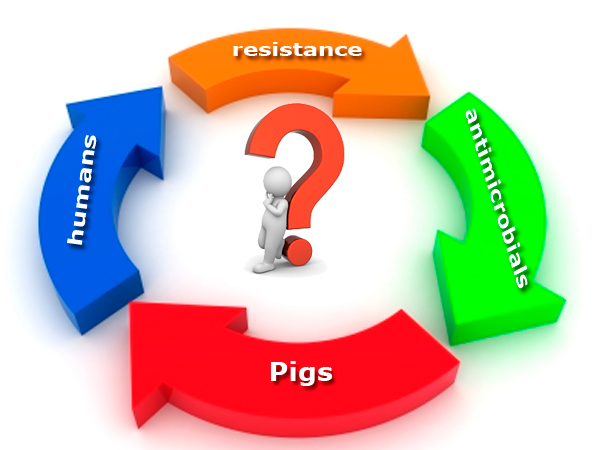BLOG: Human antibiotic resistance. The myth dispelled!

The constant attacks on the veterinary profession about their use of antimicrobials and that it is the cause of resistance in human medicine, has given me cause for concern. A recent joint paper by prominent scientists in the UK, the Netherlands and Germany dispels some of these myths.
The paper by Wu and others (2013) looked at extended spectrum beta-lactamases (ESBLs) carrying Escherichia coli from animals, animal food products and humans and compared their similarity. Many of the isolates carried common ESBL resistance genes such as blaCTX-M-group-1 (66%) but it is not surprising that E. coli from animals and man share the same mechanisms of resistance development to survive against the therapeutic attack of 3rd and 4th generation cephalosporins. The researchers also looked at the similarity of the bacterial isolates from animals and man carrying the ESBLs to see if they were related, using an advanced genetic approach called multi-locus sequence typing (MLST), which studies the similarities of seven different genes in the bacterium. The paper reported the findings that only 3/258 or 1.2% showed only a 70% similarity. I have to admit I am not the strongest on molecular information so I contacted one of the authors involved to clarify the significance and these are the comments: –
“Here is a simplified explanation of the findings; a 70% match by MLST is evidence of being distantly related. However, only 1.2% shared a LOW similarity score of 70%. Collectively, these data strongly suggest the vast majority of bacteria carrying ESBLs in animals are UNRELATED to those in humans with a mere 1.2% showing some similarity but NOT IDENTICAL with human bacteria carrying ESBLs.
What you must not confuse is the fact that the SAME RESISTANCE GENE CAN BE IN ANIMALS AND HUMANS. You will see the differing types of ESBL assessed and the distribution of these specific ESBL genes in the various sources. However, when MLST is used to type the bacteria HARBOURING the ESBL, there are no similarities. It may be argued that pig E. coli are quite different from human and also chicken E. coli etc. So what we are saying in this paper is that it looks unlikely that pigs are a source of E. coli that carry an ESBL that has entered the human population.”
They also concluded in the paper: –“The results suggest that minimising human-to-human transmission is essential to control the spread of ESBL-positive E. coli in humans.”
We have recently seen reports of carbapenemase resistance found in pigs in Germany. Carbapenems are the drugs of last resort for many Gram negative infections in human medicine (see weblog Carbapenemase resistance). No carbapenems are licensed for use in veterinary medicine, so how did the resistance enzymes get there? Was it human carriage from somebody who had been hospitalised or as was reported, from a sewer nearby. Again many environmentalists have challenged the spreading of animal manure on fields, which might allow resistance carrying bacteria to get into the water supply, and after the recent rain and floods in the UK, it would not be a surprise that untreated human sewage has escaped directly into the environment. The EC has responded rapidly with more monitoring in animals.
However, hospitals are the main reservoirs for human antimicrobial resistance genes, especially ESBLs and carbapenemases, as hospitals are where these antibiotics are injected. Shouldn’t we start sterilising hospital waste and sewage, as this is the most likely source of environmental contamination with these last-resort, antimicrobial-resistant, gene-carrying bacteria. MRSA have also been reported in rats in hospital sewers.
Should we not try to contain the spread of carbapenemase resistance this way – stop it at the source? What do you think?
References
Wu, G., Day, M.J.,Mafura, M.T., Nunez-Garcia, J., Fenner, J.J., Sharma, M., van Essen-Zandbergen, A., Rodriguez, I., Dierikx, C., Kadlec, K., Schink, A-K., Wain, J., Helmuth, R., Guerra, B., Schwarz, S., Threlfall, J., Woodward, M.J., Woodford, N., Coldham, N. & Mevius, D. (2013) Comparative analysis of ESBL-positive Escherichia coli isolates from animals and humans from the UK, the Netherlands and Germany. PLoS One 8(9): e75392. Doi:10.1371/journal.pone0075392











